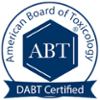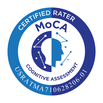There is a growing body of evidence from human and animal studies in support of the hypothesis that Parkinson's disease is a multifactorial disorder involving environmental as well as genetic factors (Semchuk et al., 1993; Langley et al., 2017; NIEHS). The consensus on this is very strong. In fact, according to the National Institutes of Environmental Health Sciences website, "While scientists do not know the exact cause of Parkinson’s disease, most agree that the combination of a person’s genes, environment, and the interaction between these two factors play a role in disease onset and progression.".
The relationship between occupational and environmental exposure to neurotoxicants and Parkinson's disease is best exemplified by the famous case of unwitting 1-methyl-4-phenyl-1,2,3,6- tetrahydropyridine (MPTP) poisoning which was found to be associated with damage to the same brain region implicated in idiopathic Parkinson's disease (see Langston et al., 1983). It was subsequently shown, that a metabolite of MPTP called 1-methyl-4-phenylpyridinium (MPP+), disrupts mitochondrial complex 1 function (Ramsay et al., 1986) which, is also disrupted in idiopathic Parkinson's disease (see Parker et al., 1989; Schapira et al., 1990). These findings pointed to a potential mechanistic site of interaction between neurotoxicant exposure and factors implicated in the pathogenesis of idiopathic Parkinson's disease. Studies in monozygotic twins discordant for the disease subsequently showed that exposure to another complex 1 inhibitor, trichloroethylene, is associated with an increased risk for Parkinson's disease even when exposure occurs years before the onset of symptoms (see Gash et al., 2008; Goldman et al., 2012). This long prodromal period suggests that exposure to neurotoxicants can play a role in the degenerative cascade long before the patient becomes symptomatic. A systematic literature review and meta analysis by Gunnarsson and Bodin (2019) concluded that "there is now strong evidence that exposure to any pesticide involves a ≥ 50% increased risk for developing Parkinson's disease". Recently, manganese which is chemical constituent of welding rods, was shown to promote the aggregation and prion-like cell-to-cell exosomal transmission of α-synuclein which is implicated in Parkinson's disease neuropathology (Harischandra et al., 2019). A study by Gamache and colleagues has shown that exposure to pesticides and toxic metals were both associated with an earlier onset of Parkinson's disease. This effect was greater with higher levels of exposure, both in terms of frequency and proximity (Gamache et al., 2019). This study replicated the earlier findings of Ratner and colleagues who found a younger age at onset of sporadic Parkinson's disease among subjects occupationally exposed to metals and pesticides (Ratner et al., 2015).
Ironically, reactive oxygen species generated by the metabolism of Levo-dopa (l-dopa) to dopamine, which is used to treat Parkinson's disease, has also been implicated as a possible factor in the progression of the disease. This has led to some concerns about the use of L-dopa as a therapeutic especially in the early course of the disease. A recent study looking at the clinical course of the disease over a period of 80 weeks in groups of patients with early Parkinson's disease did not find any disease modifying effects of treatment with L-dopa in combination with carbidopa (Verschuur et al., 2019). However, these results should be interpreted with some level of caution as genetic polymorphisms encoding for endogenous enzymes involved in neuroprotection from dopamine metabolism may influence individual susceptibility to dopamine neurotoxicity (see Stansley and Yamamoto 2013 and Segura-Aguilar et al., 2014; but also see Olanow, 2015). The current recommendation is that L-dopa continue to be used to treat the symptoms of Parkinson disease but that the lowest dose necessary to provide the patient with good clinical relief be used in order to minimizing the risk of any potential side effects (Olanow, 2015). Note: This information is provided for educational purposes only, please consult your treating neurologist if you have any questions or concerns about the use of L-dopa in the management of your own symptoms of Parkinson's disease.
Last update: June 9, 2024
The relationship between occupational and environmental exposure to neurotoxicants and Parkinson's disease is best exemplified by the famous case of unwitting 1-methyl-4-phenyl-1,2,3,6- tetrahydropyridine (MPTP) poisoning which was found to be associated with damage to the same brain region implicated in idiopathic Parkinson's disease (see Langston et al., 1983). It was subsequently shown, that a metabolite of MPTP called 1-methyl-4-phenylpyridinium (MPP+), disrupts mitochondrial complex 1 function (Ramsay et al., 1986) which, is also disrupted in idiopathic Parkinson's disease (see Parker et al., 1989; Schapira et al., 1990). These findings pointed to a potential mechanistic site of interaction between neurotoxicant exposure and factors implicated in the pathogenesis of idiopathic Parkinson's disease. Studies in monozygotic twins discordant for the disease subsequently showed that exposure to another complex 1 inhibitor, trichloroethylene, is associated with an increased risk for Parkinson's disease even when exposure occurs years before the onset of symptoms (see Gash et al., 2008; Goldman et al., 2012). This long prodromal period suggests that exposure to neurotoxicants can play a role in the degenerative cascade long before the patient becomes symptomatic. A systematic literature review and meta analysis by Gunnarsson and Bodin (2019) concluded that "there is now strong evidence that exposure to any pesticide involves a ≥ 50% increased risk for developing Parkinson's disease". Recently, manganese which is chemical constituent of welding rods, was shown to promote the aggregation and prion-like cell-to-cell exosomal transmission of α-synuclein which is implicated in Parkinson's disease neuropathology (Harischandra et al., 2019). A study by Gamache and colleagues has shown that exposure to pesticides and toxic metals were both associated with an earlier onset of Parkinson's disease. This effect was greater with higher levels of exposure, both in terms of frequency and proximity (Gamache et al., 2019). This study replicated the earlier findings of Ratner and colleagues who found a younger age at onset of sporadic Parkinson's disease among subjects occupationally exposed to metals and pesticides (Ratner et al., 2015).
Ironically, reactive oxygen species generated by the metabolism of Levo-dopa (l-dopa) to dopamine, which is used to treat Parkinson's disease, has also been implicated as a possible factor in the progression of the disease. This has led to some concerns about the use of L-dopa as a therapeutic especially in the early course of the disease. A recent study looking at the clinical course of the disease over a period of 80 weeks in groups of patients with early Parkinson's disease did not find any disease modifying effects of treatment with L-dopa in combination with carbidopa (Verschuur et al., 2019). However, these results should be interpreted with some level of caution as genetic polymorphisms encoding for endogenous enzymes involved in neuroprotection from dopamine metabolism may influence individual susceptibility to dopamine neurotoxicity (see Stansley and Yamamoto 2013 and Segura-Aguilar et al., 2014; but also see Olanow, 2015). The current recommendation is that L-dopa continue to be used to treat the symptoms of Parkinson disease but that the lowest dose necessary to provide the patient with good clinical relief be used in order to minimizing the risk of any potential side effects (Olanow, 2015). Note: This information is provided for educational purposes only, please consult your treating neurologist if you have any questions or concerns about the use of L-dopa in the management of your own symptoms of Parkinson's disease.
Last update: June 9, 2024

